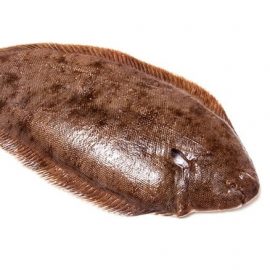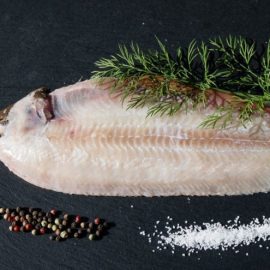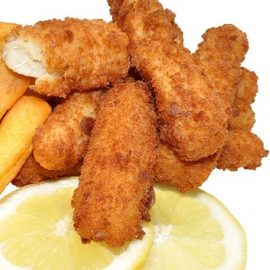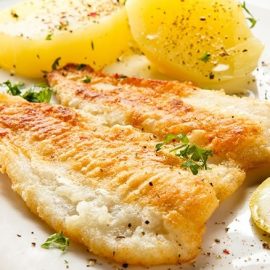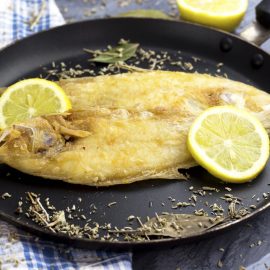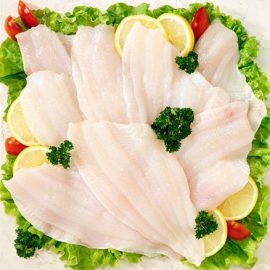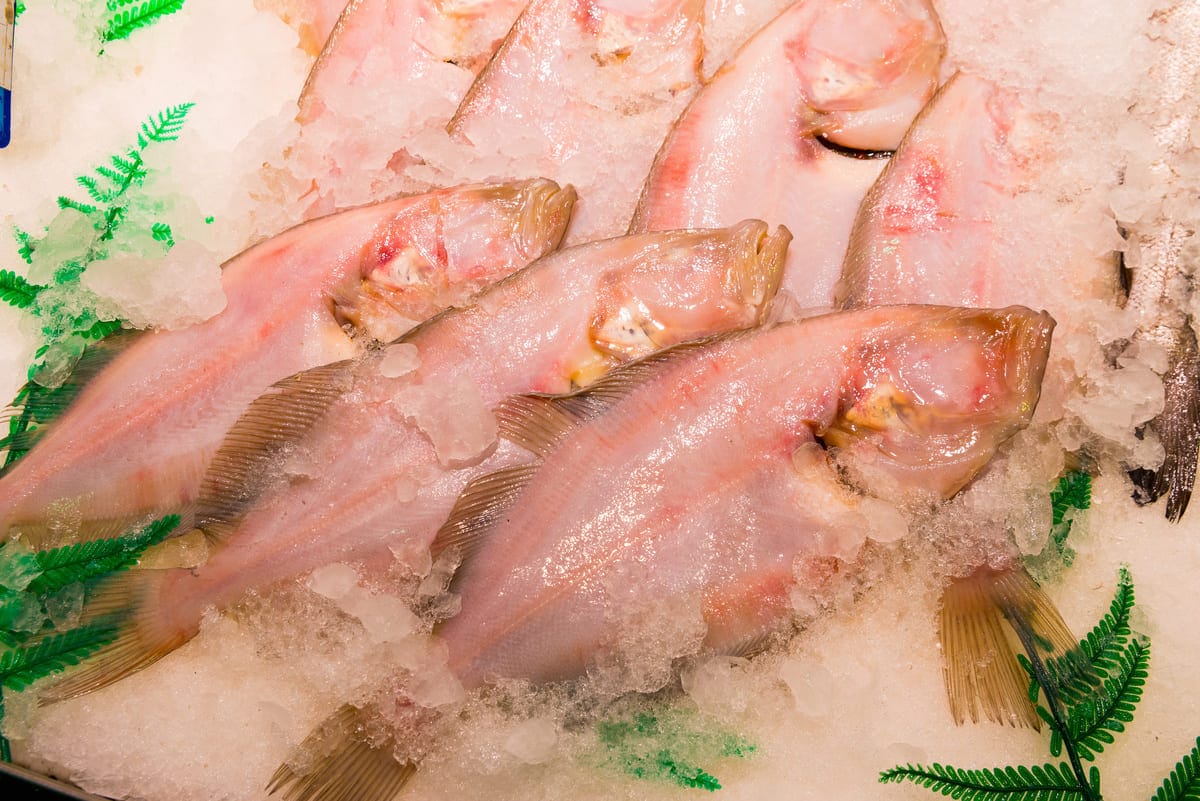
Introduction
Cornish Sole, a type of fish found in the North Atlantic, is a delicacy known for its sweet and succulent taste. The flesh of Cornish Sole is rich in flavour and delicate in texture like in an oil painting, making it a popular choice amongst seafood lovers.
Cornish Soles are Spain’s best-kept secret! Spain buys over 90% of the Cornish Soles that arrive on the Cornish coast.
You can use it in place of Lemon Sole if you like. It’s no secret that celebrity chefs are now adding Cornish Soles to their menus and introducing them to British diners. Learn why everyone is talking about it.
Description & Characteristics
The Cornish Sole (Lepidorhombus whiffiagonis) is a species of flatfish in the Scophthalmidae family, found mainly in the eastern Atlantic Ocean. It is considered an important commercial food fish, particularly in Europe.
The Cornish Sole has a broad, oval-shaped body and can reach sizes up to 72 cm (28 inches) long. Its upper surface is greyish-brown with small dark spots, while its underside is white or yellowish. Its eyes are on the left side of its head, giving it camouflage when lying on the seafloor.
The Cornish Sole has two fins running along its body. The first run along its spine contains 80-90 soft rays, while the second fin runs along its belly and contains approximately 50 soft rays. It also has two wide pectoral fins that help it move around on the seafloor.
Its most distinguishing feature is its three pairs of barbels near its mouth, which the fish use to detect food sources in murky waters.
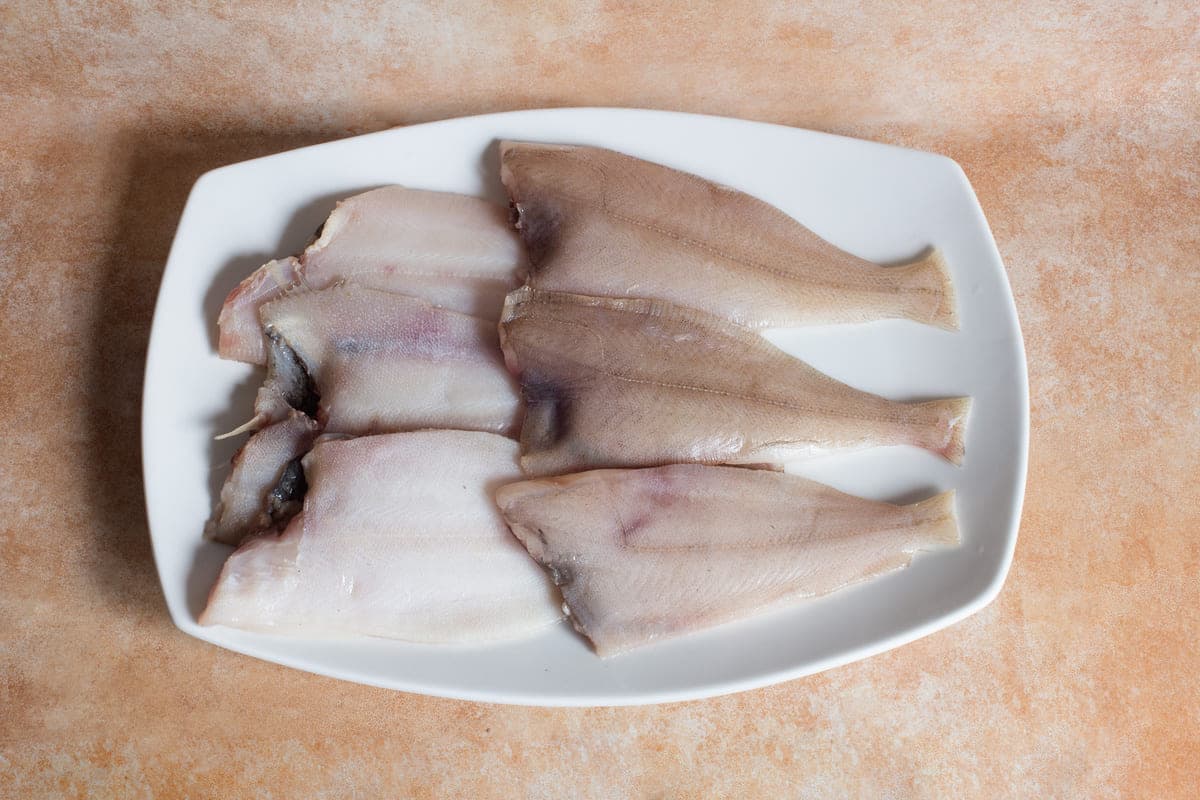
Habitat And Distribution
The Cornish Sole is an ocean-dwelling species with a wide distribution worldwide. It is found in the Northern Atlantic and Pacific Oceans and other parts of the world, such as the coasts of South America and Africa.
Its habitat consists of mudflats, sandy areas, and shallow waters near coastal regions. This flatfish has adapted to live in both saltwater and brackish estuaries.
As its name would suggest, this fish lives mainly on the bottom of the ocean floor, preferring to stay close to rocks so it can hide from predators. Its camouflage colouration helps it blend in with its surroundings and remain unseen by potential predators.
While it typically stays within a few meters of the seafloor, it may venture into shallower water if needed for protection or food. The depth at which it is most commonly found ranges from 10-50 meters deep in warm subtropical waters.
Cornish Sole’s Diet
Its diet consists primarily of small crustaceans and molluscs, which it finds by scouring the ocean floor with its protrusible mouth. It has a highly specialised hunting technique: it moves along the seabed with its eyes pointing upward and then rapidly sucks up prey when it detects them.
To capture such prey, Cornish sole has adapted to possess an array of features such as their wide head and sizeable protrusible mouth with bony plates at the posterior end to help them locate food on the seabed. They also have a pair of sensory organs called barbells located near their mouths, aiding them in detecting prey even in total darkness. Additionally, their flattened shape allows for swift movement over sand or mud without much effort.
The abundance of these features makes Cornish sole highly efficient hunters in their environment, allowing them to effectively capture their desired prey and complete their intricate cycle of life. From this perspective, these fish, indeed, are masters of adaptation who have learned how to thrive within their habitat through evolution and natural selection.
Life Cycle Of Cornish Sole
The Cornish Sole is one of the most iconic fish in the North Atlantic Ocean. This flatfish lives up to 15 years and averages 30-50 cm in length.
The life cycle of this species consists of several distinct stages – spawning, larval development, juvenile growth, and maturity.
Spawning occurs in late spring or early summer when the female Cornish Sole lays its eggs in sheltered coastal areas from depths of 10–20 m. After two weeks, the eggs hatch into larvae, which undergo metamorphosis into juvenile fish.
Juvenile Cornish Soles inhabit shallow waters close to shore during their early life stages and feed on small crustaceans like shrimps and crabs. As they grow older, they move further out to sea, eventually reaching maturity at around two years old. Once mature, they feed mainly on larger crustaceans like lobsters, cuttlefish and squid.
After reaching maturity, Cornish Soles will typically remain in the same area for most of their adult lives. They spawn at the exact location yearly, making them highly vulnerable to overfishing in certain areas, as their population can quickly be depleted if not managed responsibly. This has resulted in some stocks being declared endangered due to unsustainable fishing practices; however, efforts are being made to protect these stocks by implementing catch limits and other management measures such as closed seasons and gear restrictions.
Cornish Sole Fisheries
In some parts of its range, such as off the South West coast of England, it is still targeted in high numbers by commercial fleets in Cornwall. In other areas, such as off the coast of North America and Japan, it is mainly landed as bycatch.
In recent years there has been an increasing trend toward sustainable fishing practices for Cornish sole. This includes reducing bycatch through improved gear selectivity and using more selective harvesting methods such as hand lining or jigging.
In addition, there have been improvements made to fish stock assessment models to understand population dynamics better and ensure that sustainable harvest levels are maintained.
Furthermore, many countries have adopted catch limits or area-based management measures for this species to ensure its long-term conservation and viability.
Sustainability
The sustainability of Cornish sole is an important consideration when it comes to the long-term viability of the species. A healthy and sustainable fishery ensures that the species can continue to be harvested, providing an important food source for local communities. With this in mind, several measures have been taken to ensure the sustainability of Cornish sole fisheries by The Cornish Fish Producers Organisation and other environmental organisations.
First, catch limits have been set for commercial and recreational fisheries to limit overfishing and allow populations time to recover from harvesting. Additionally, regulations have been established to control fishing gear used in Cornish sole fisheries, such as trawls and nets.
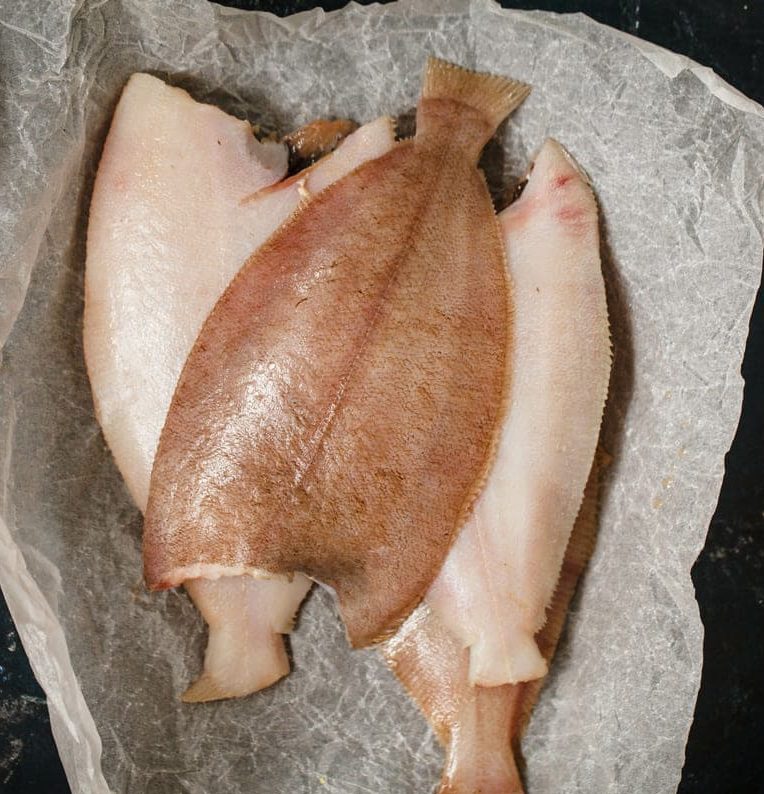
These restrictions are designed to reduce bycatch and unnecessary environmental damage caused by fishing practices. Furthermore, the introduction of closed areas has allowed some parts of the population to remain undisturbed, allowing them to reproduce and replenish stocks in other regions.
Overall, these measures have resulted in a more sustainable fishery that has significantly reduced the overexploitation of Cornish sole populations.
Cornish Sole As Food
Cornish sole is a flatfish popularly used in many cuisines due to its delicate flavour and flaky texture. It has been estimated that 1,500 tonnes of this fish are caught yearly in the UK alone.1 With such high demand, it is vital to understand how to prepare, cook, and enjoy this unique seafood properly.
Cornish sole has a mild flavour and incredibly soft texture when cooked correctly. Its delicate taste also pairs well with a variety of other ingredients. To bring out the best flavours in Cornish sole, it can be pan-fried or oven-baked with herbs and spices.
Here are some tips for getting the most out of your Cornish sole:
- Use butter or oil when cooking so the fish doesn’t dry out.
- Add citrus juice to give the fish a zesty flavour.
- Serve with vegetables or grains for added nutritional value.
Cornish soles can be served as an appetiser or as a main meal. Depending on personal preference and accompanying dishes, it can also be served hot or cold. For example, it can be served alongside roasted vegetables and potatoes for a hearty winter meal or as an elegant seafood dish featuring other fish and shellfish. No matter how prepared, Cornish sole is sure to make any meal memorable!
Processing Cornish Soles
Whole fish for sale
Despite the Cornish sole’s excellence, it is frequently compared to the Dover sole. Whole fish are sold with no head or guts, making them ready for cooking.
Fish prepared in-house has been cleaned, gutted, and scaled, ready for baking, grilling, or pan-frying. When fish is cooked properly, it stays incredibly juicy.
Sold as fillets
There are many fish cuts, but the filet is the most common. Fillets are created by taking off the bone and then pin-boning them. Cut fish fillets into more significant portions that can later be processed.
The flesh of the Mergim sole is soft, and the skin is thin, allowing it to be fried quickly until crispy. Large megrim fillets are standard.
How To Prepare Cornish Soles
Preparing Cornish sole is a culinary adventure akin to an artist mixing paint on a canvas. It is a delightful process that can yield delicious results with the right ingredients and attention to detail.
To prepare Cornish sole, start by selecting the freshest fish available. Look for clear eyes, bright gills, and firm flesh. Then, rinse the fish under cold water and pat dry with paper towels.
Place the fish on a cutting board and remove any scales or bones before seasoning it lightly with salt and pepper. Next, heat a skillet over medium heat and add the oil or butter of your choice.
Add the seasoned fish to the pan and cook for 3-5 minutes per side until golden brown. Finally, serve with your favourite accompaniment, roasted vegetables or lemon wedges, for added flavour.
Use high-quality ingredients and keep an eye on the cooking time so the fish does not become overcooked or dry. Additionally, be sure to season lightly so as not to overpower the delicate flavour of the fish itself.
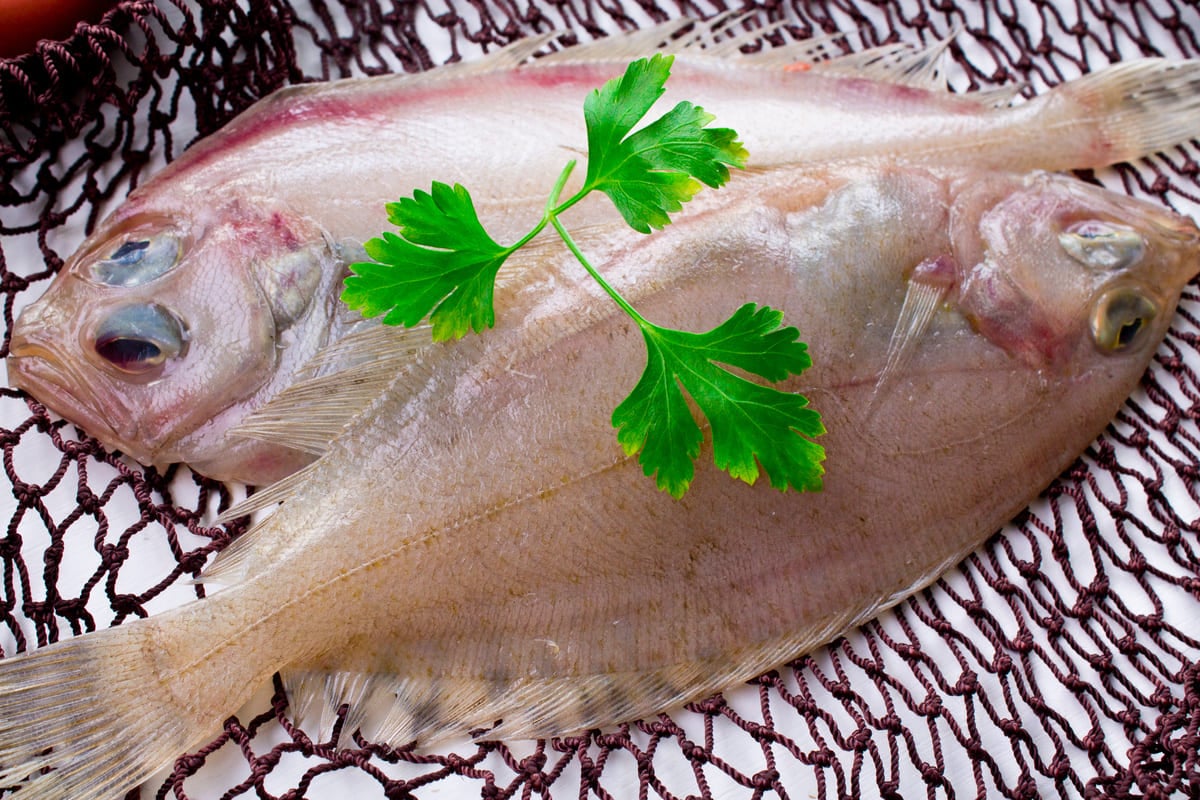
Best Side Dishes Paired With Cornish Soles
Cornish sole is an iconic fish dish popularised in Spain and worldwide. Its delicate flavour, mild seasoning, and flaky texture make it a favourite of home cooks and restaurant chefs. Paired with suitable side dishes, the Cornish sole can become a meal fit for royalty.
Here are some of the best side dishes to accompany this delectable dish:
- A hearty vegetable like roasted Brussels sprouts or steamed asparagus complements the mild taste of Cornish sole perfectly.
- Potatoes such as mashed potatoes or boiled red potatoes bring out the flavour of the fish by providing sweetness and texture contrast.
- Flavorful grains like wild rice or quinoa add nutty notes that enhance the richness of Cornish sole.
- A tangy salad with a dressing prepared from vinaigrette or light mayonnaise provides a refreshing balance to an otherwise rich meal.
These side dishes can be used to create a variety of meals that will satisfy even the most discerning palate. With so many options available, everyone will find a combination they love! Experiment with different flavours and textures to discover your unique take on this classic dish.
Popular Cornish Sole Recipes
This bottom-dwelling fish is a favourite among chefs, as it can be cooked in various ways to produce a delicious dish that pleases the palate. While grilling and baking are two of the most common methods to prepare Cornish Sole, many popular recipes incorporate this delectable fish into unique dishes.
One of the classic recipes for Cornish Sole is poached with tarragon butter. This easy dish involves poaching the fillets in white wine until they are just cooked through, then topping them with a delicious tarragon butter sauce made from melted butter, fresh herbs, and lemon butter.
Another favourite recipe is pan-seared Cornish Sole with capers and parsley. To make this dish, season the fillets with salt and pepper before lightly coating them in flour and frying them in a hot pan until golden brown. When cooked through, top with capers and freshly chopped parsley for an added burst of flavour.
For something even more indulgent, try pan-searing Cornish Sole topped with creamy Hollandaise sauce or a delectable grilled Cornish sole – a decadent treat that will make any meal memorable!
Comparison To Other Fish
When comparing Cornish sole/ Megrim sole to other fresh fish, several differences distinguish this type of flatfish from its counterparts. Most notably, the Cornish sole has an oval-shaped body with two eyes on the left side, usually brown or grey. It also has a delicate white flesh that is flavorful and moist when cooked properly.
In contrast, many other types of flatfish have a triangular-shaped body and three eyes, one on the right side. Their flesh tends to be firmer and more coarse when compared to Cornish sole.
Cornish sole’s flavour profile is also unique compared to other types of fish. Its mild taste and sweet aroma can make it an excellent choice for those who prefer more favourable tasting seafood options. Additionally, its delicate texture makes it perfect for grilling and baking, making it an ideal choice for home cooking enthusiasts. While some people may find the flavour of other types of flatfish too strong or overpowering, Cornish sole’s subtler flavour can be enjoyed by everyone.
Conclusion
The cornish sole is a relatively small fish with plenty of flavour and nutrition in each bite. Its mild taste makes it an ideal accompaniment for lighter dishes, while its high omega-3 content provides valuable health benefits. Its sustainability also makes it suitable for those who care about the environment and want to make responsible choices regarding seafood consumption. With all these qualities combined, it’s no wonder this fish has become so popular among seafood lovers worldwide.
